Historic Valencia
One of our favorite ways to learn about a new city is a walking tour. This walking tour was called “Essentials of Valencia.” We met up with our guide, Sofi, who gave us a brief overview of Valencia’s history. She showed us this cool map of the three different walls that protected Valencia through the centuries: yellow for the original Roman colony founded in 138 BCE, red for the 8th-century Moorish city, and blue for the Christian city, established by the Reconquista in 1238. The green area was where the Turia River flowed until 1969; now Turia Gardens is a wonderful park. The old city walls are gone now, except for a few remnants, like Serranos Towers, near our apartment.
Our tour began at Estació del Nord (North Station), Valencia’s main train station, at the southern tip of the blue boundary. It was a large Art Nouveau building from 1907, with colorful flowers and fruit decorating the exterior. Inside, the ceiling was covered with broken-tile mosaics, a Modernist technique called trencadís that Antoni Gaudi made famous in Barcelona. Small mosaics on the walls said “Good Journey” in many different languages.
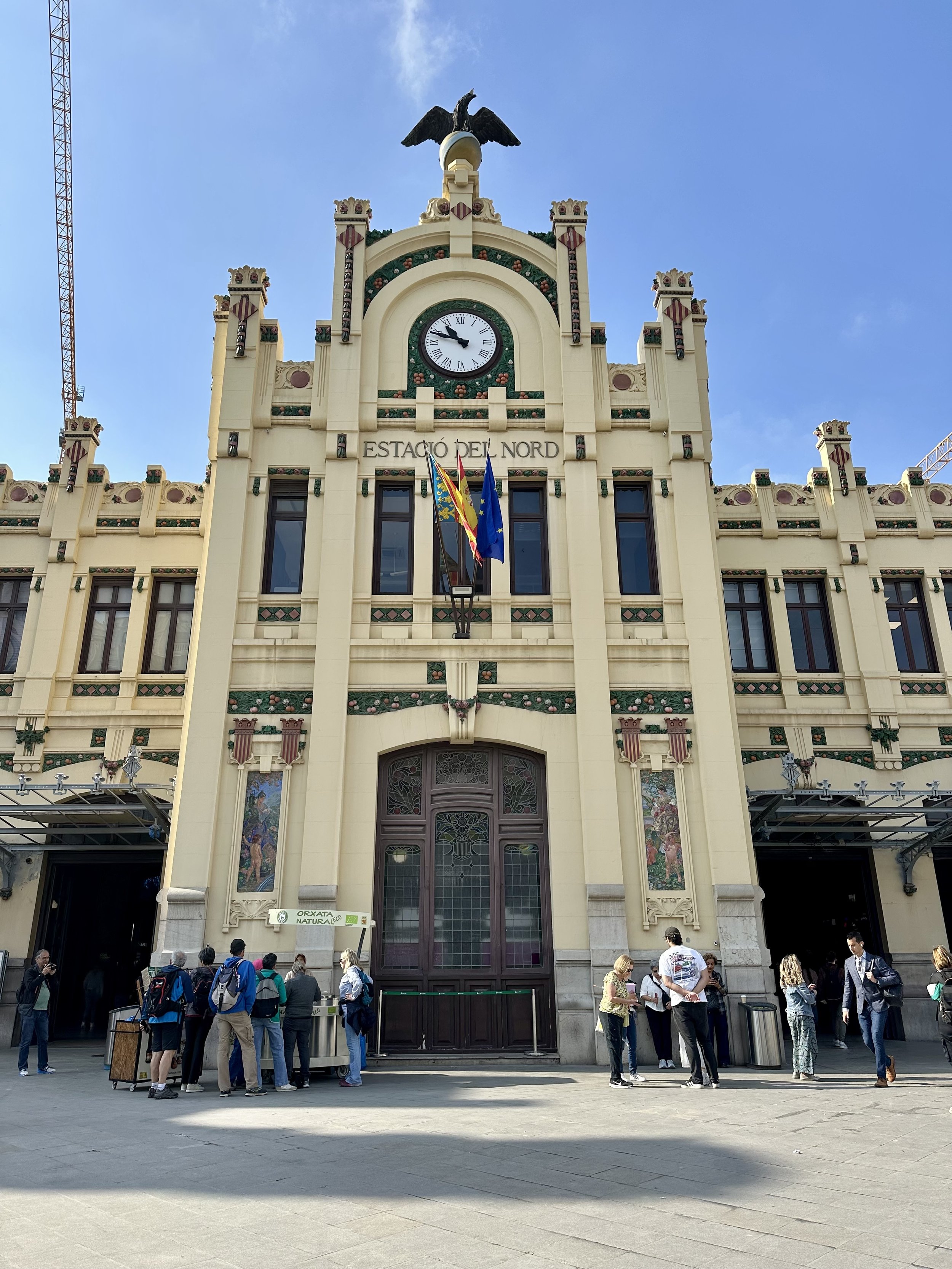
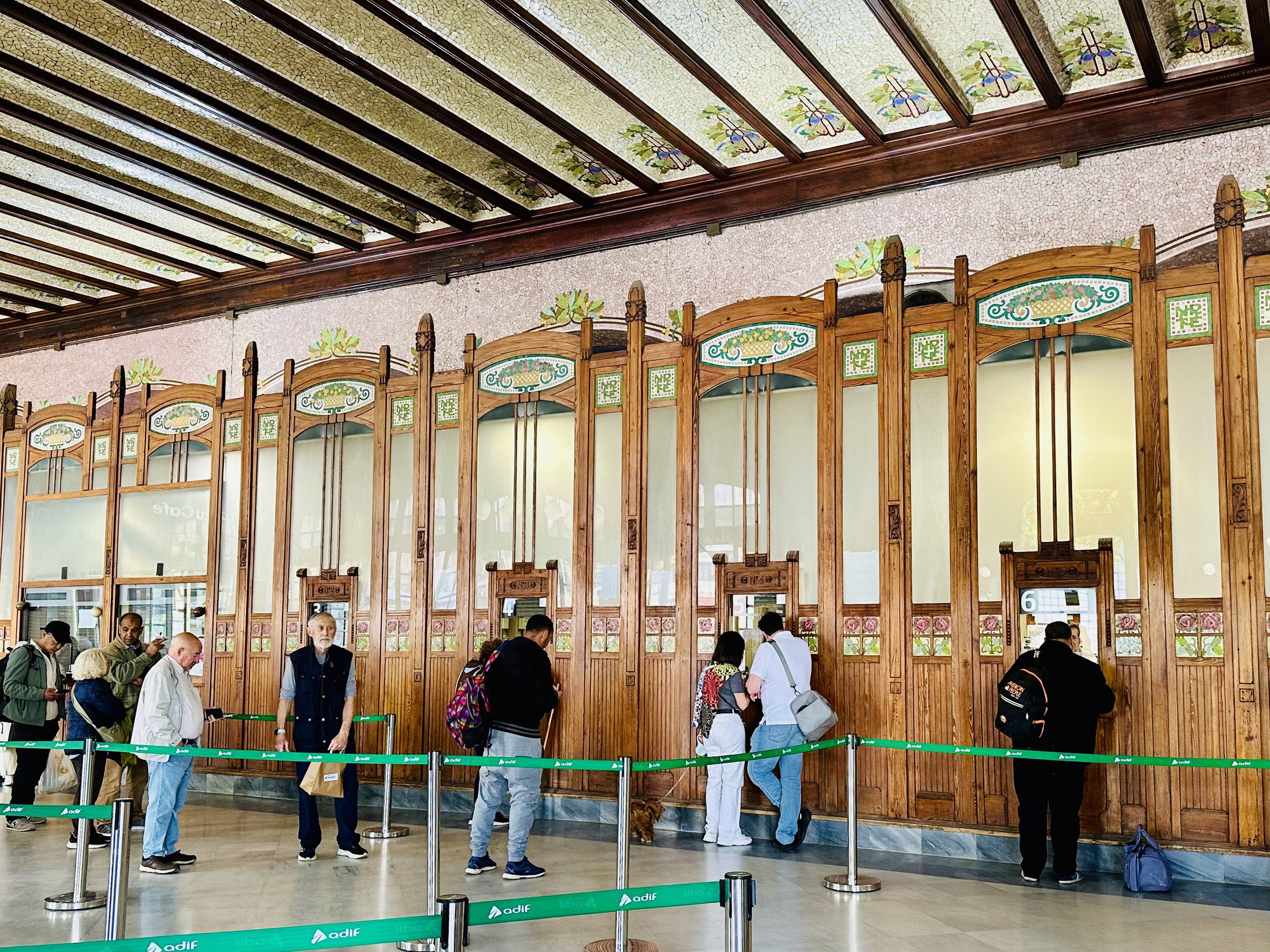
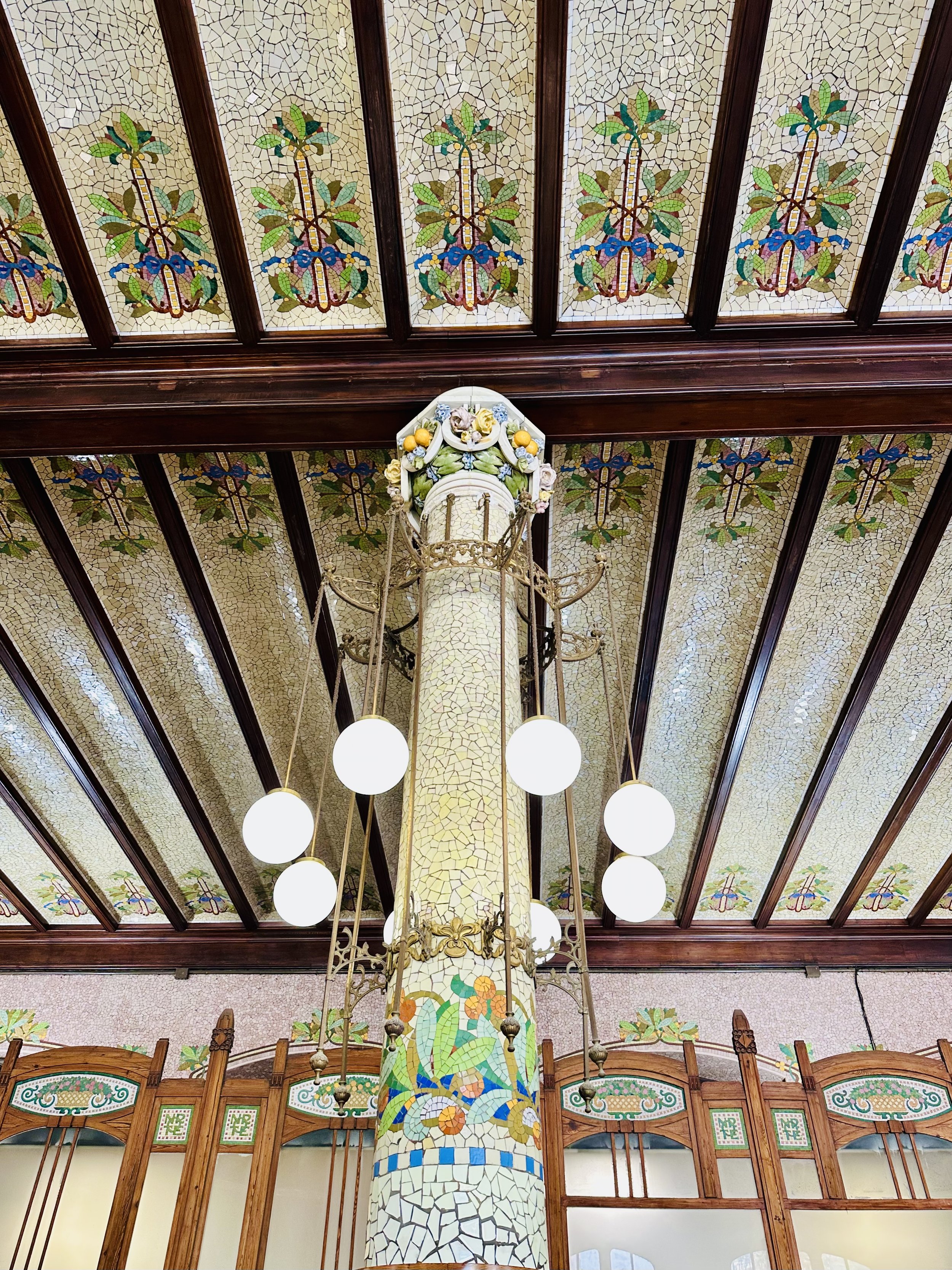
Our next stop was the Palau consistorial de València (Valencia City Hall), where we learned why the bat is the symbol of Valencia. Legend has it that when King James I laid siege to the city of Valencia, a bat awakened him in his tent, alerting him to the impending attack of the Moorish Army. Sofi also explained City Hall’s significance during Las Fallas, Valencia’s annual 19-day celebration of the Feast of St. Joseph. Every day during Las Fallas at 2pm, the festival queen and child queen appear on the balcony of City Hall and announce the day’s pyrotechnic show in the Plaza Ayuntamiento. It must be a very LOUD three weeks!
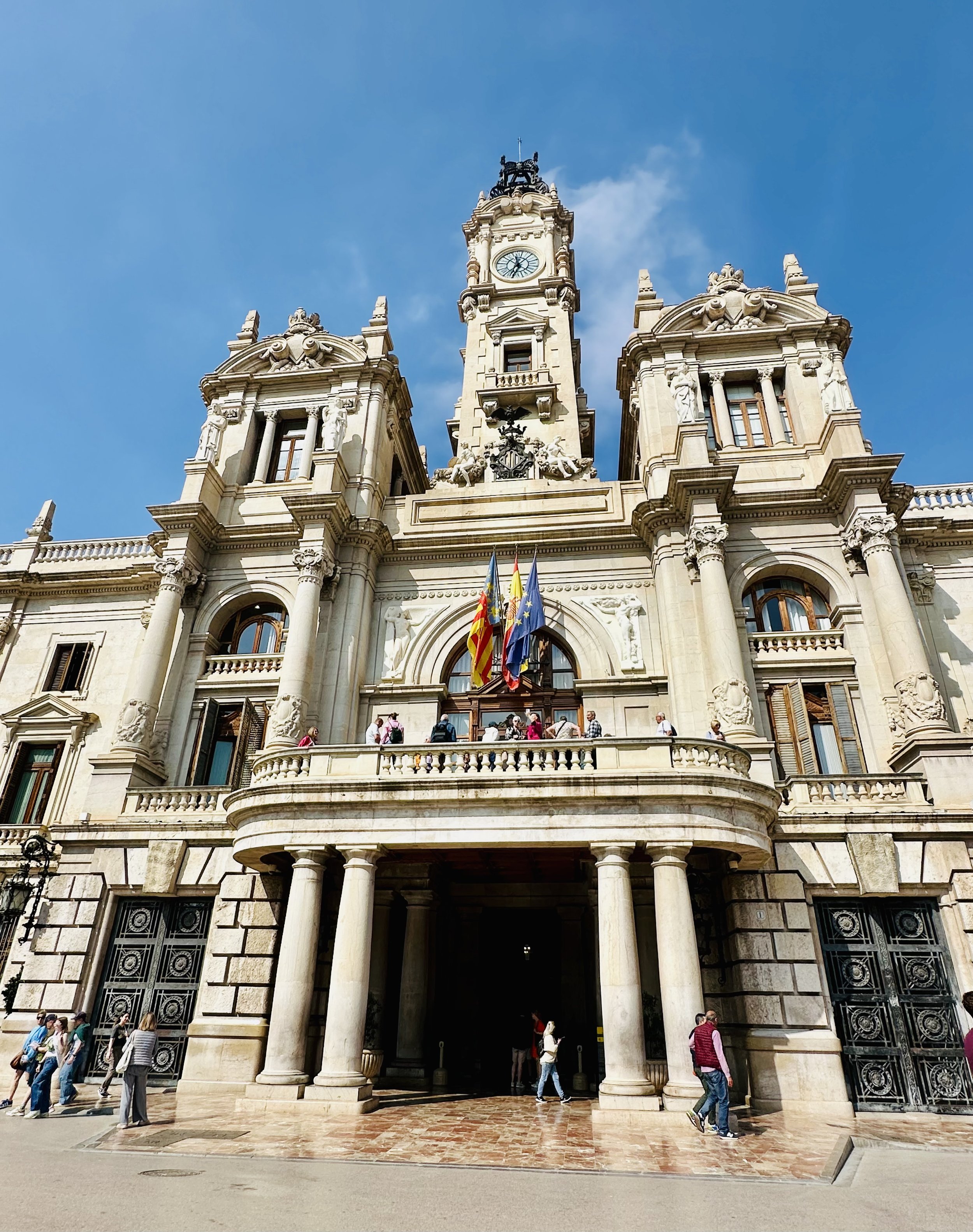

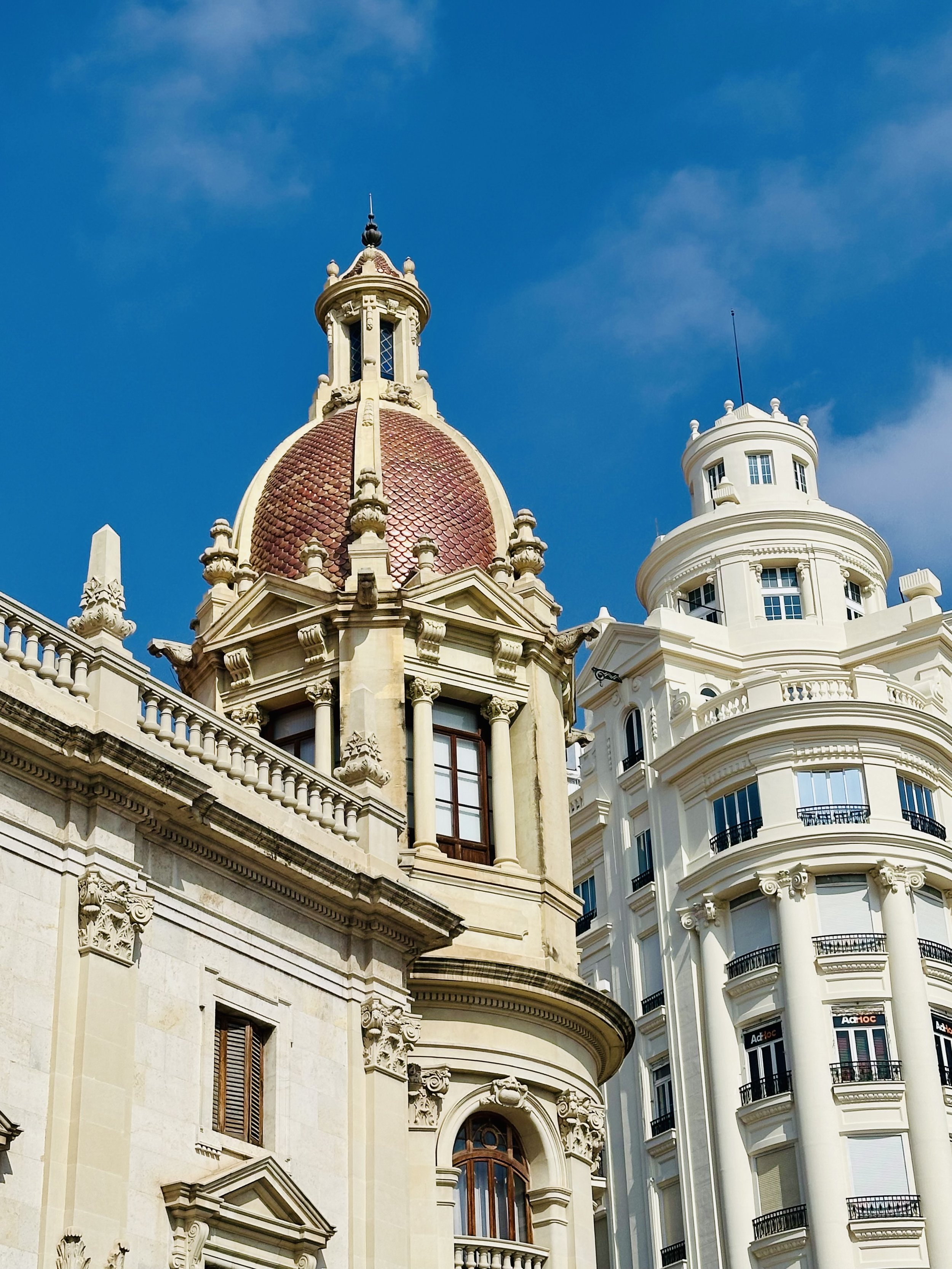
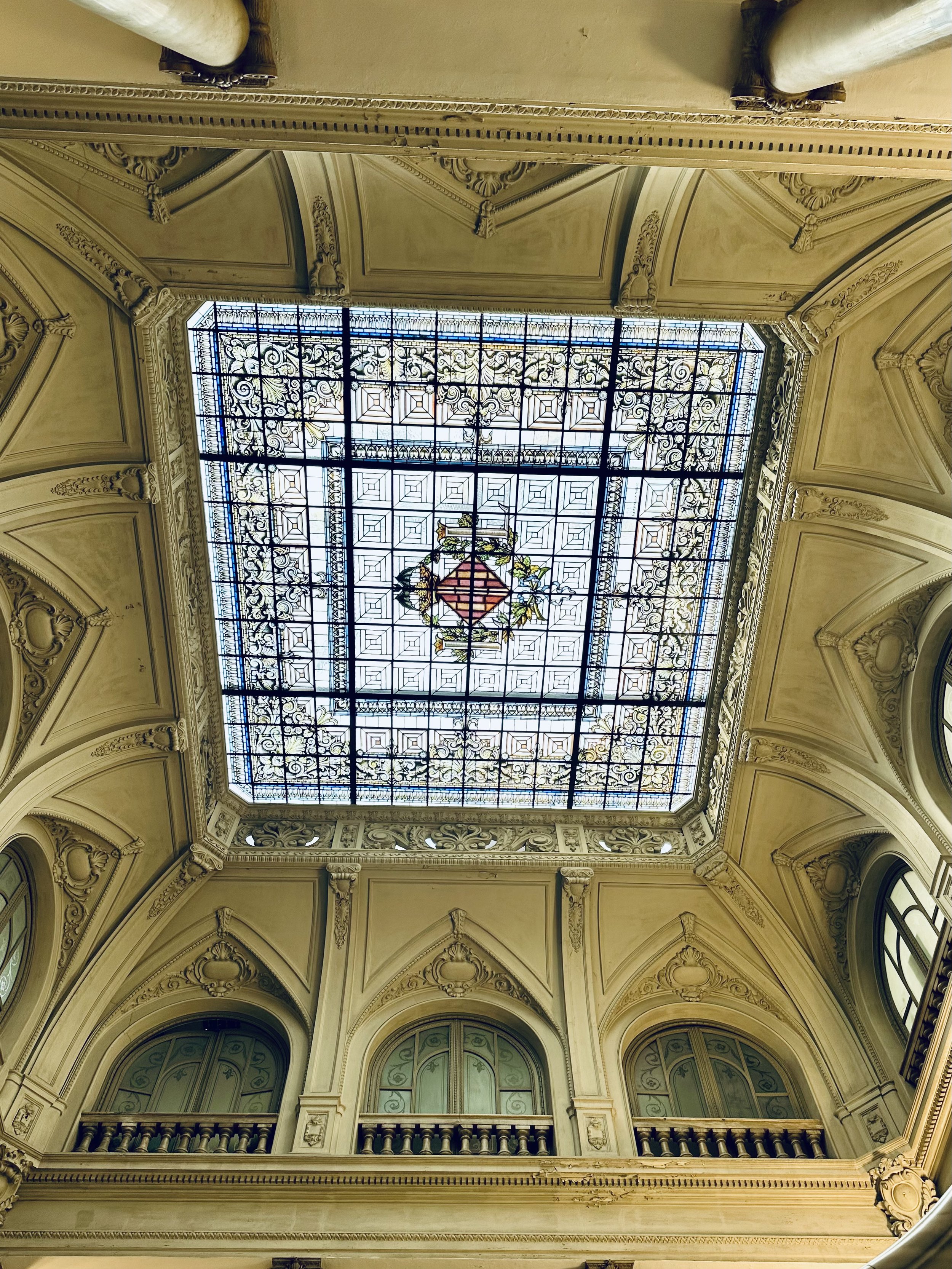
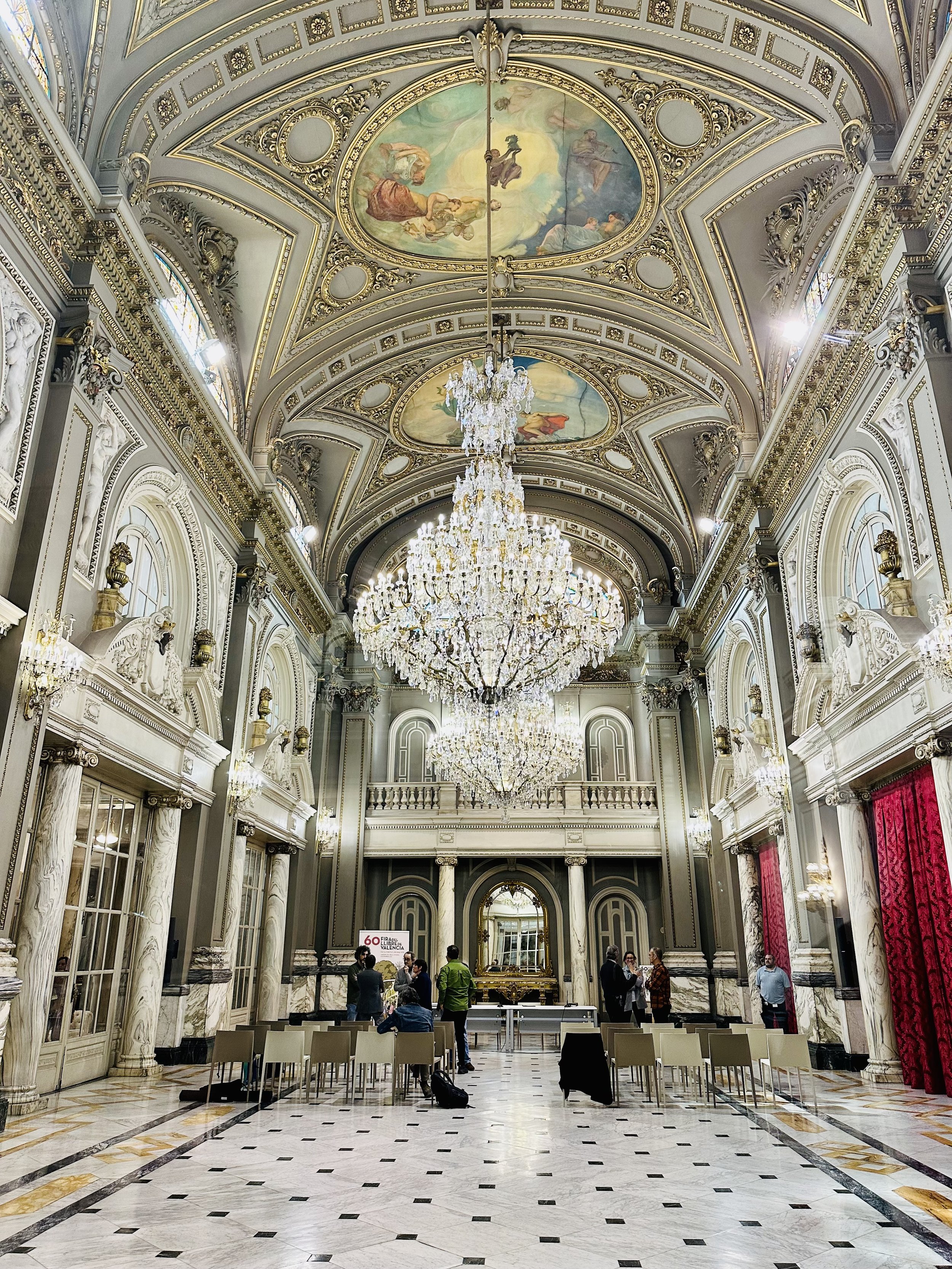

We walked to the Ciutat Vella, the oldest part of the city, and toured the Silk Exchange, a fascinating place that I wrote about here. The streets in Ciutat Vella were lined with pastel-colored buildings from the 16th-19th centuries.
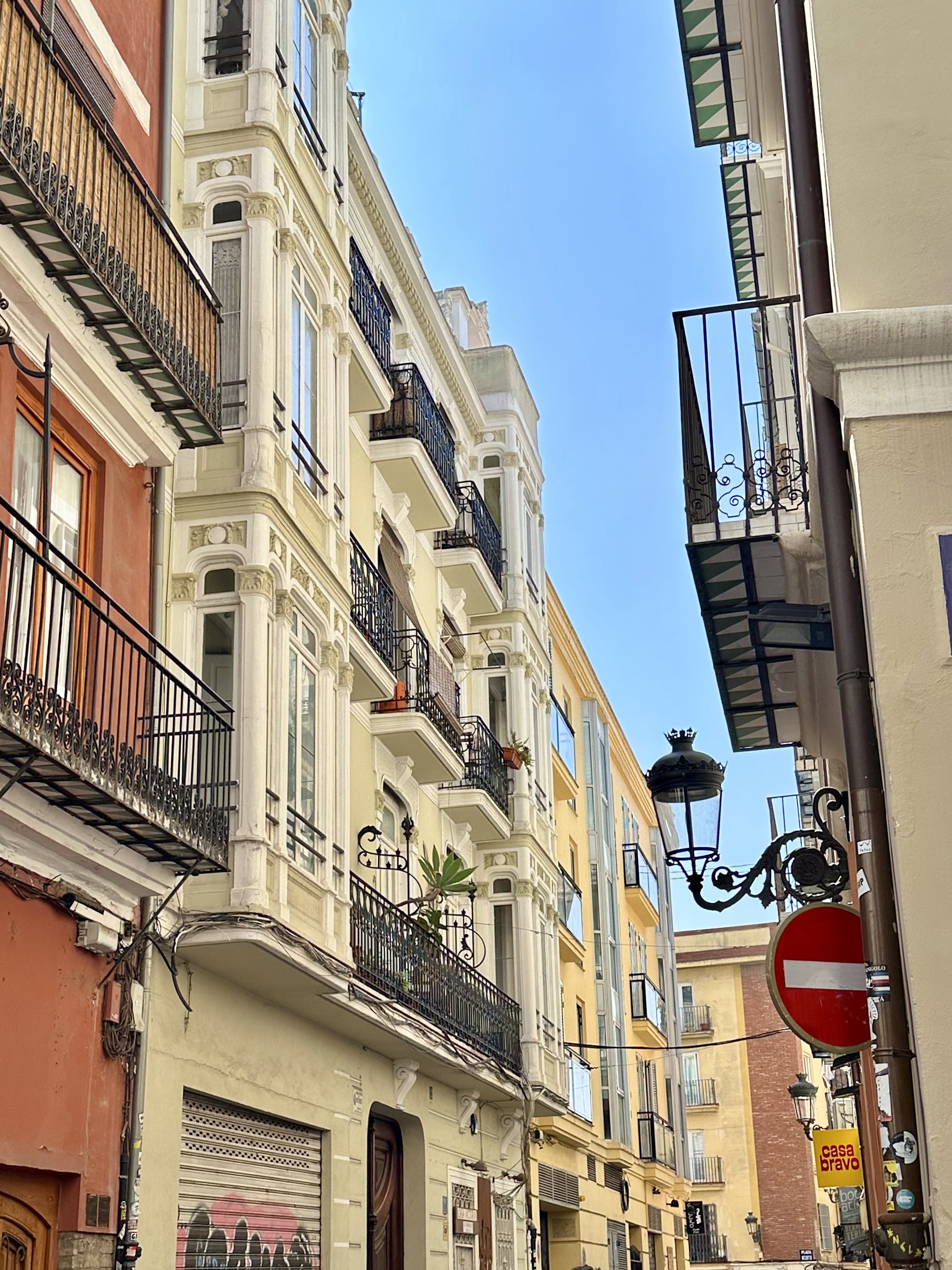

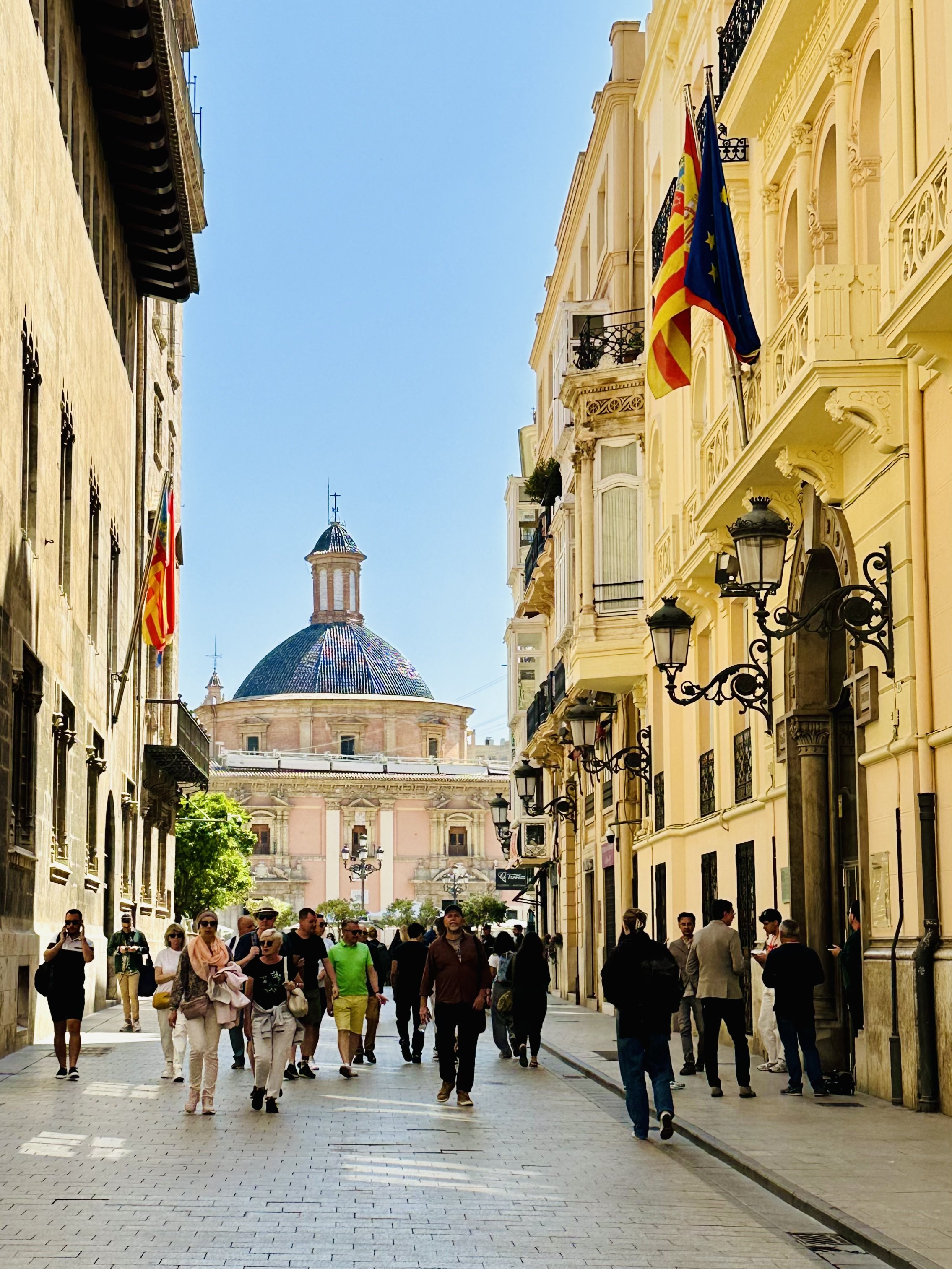
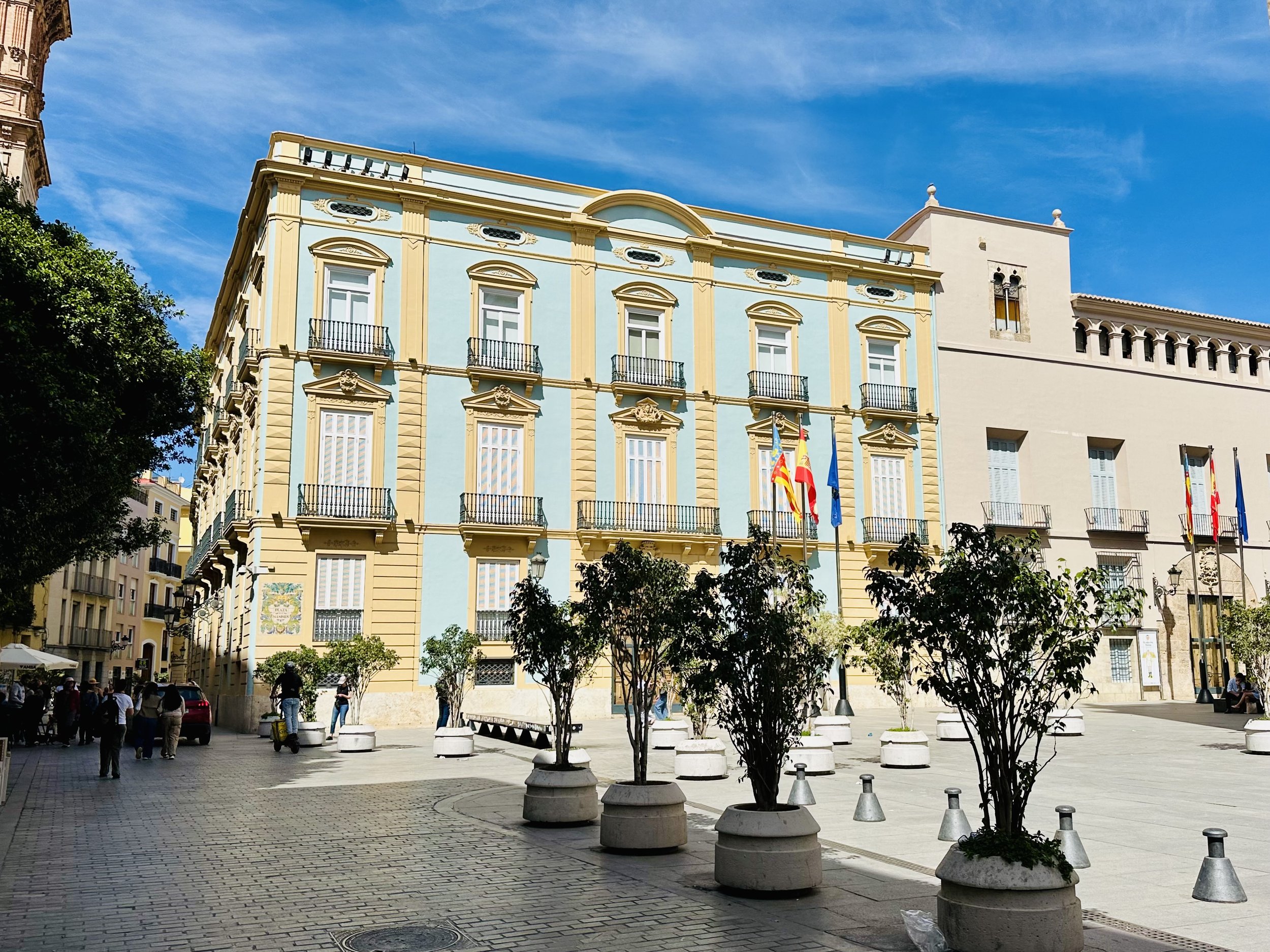
The last stop on our tour was Plaza de la Virgen, the big central square, luxuriously paved in beautiful marble. Surrounding the square were Valencia Cathedral, the Basilica of Our Lady of the Foresaken, and the Palace of the Generalitat. In the center was the Turia Fountain, symbolizing the river and its irrigation canals. The cathedral’s octagonal bell tower was called the Micalet, named for its huge bell. We stood at the cathedral’s Door of the Apostles, and Sofia told us about the Water Tribunal that still meets there every Thursday. The custom started in 10th century Muslim Valencia, to settle disputes between farmers in the various irrigation communities, making it the oldest court in the world.
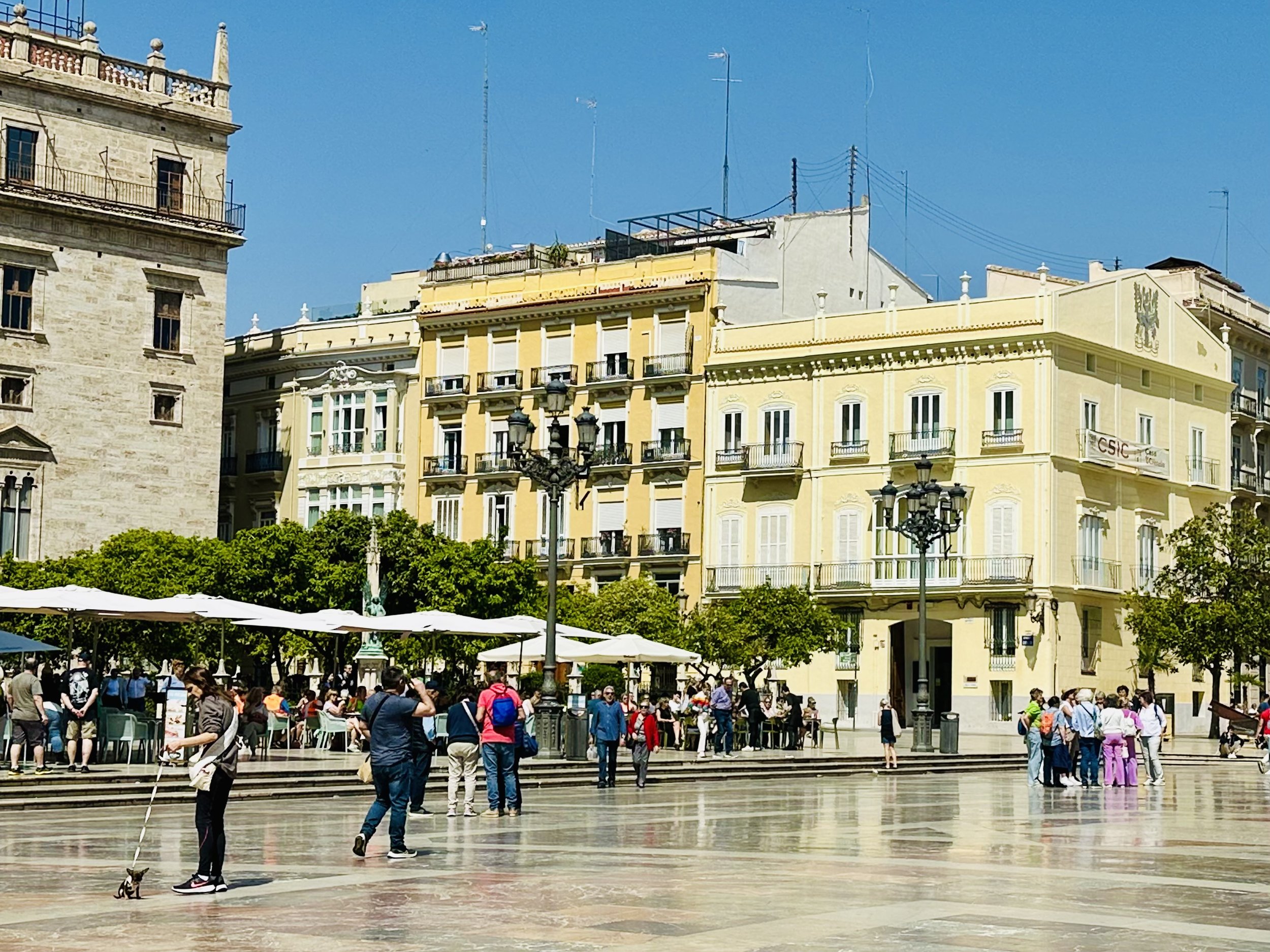
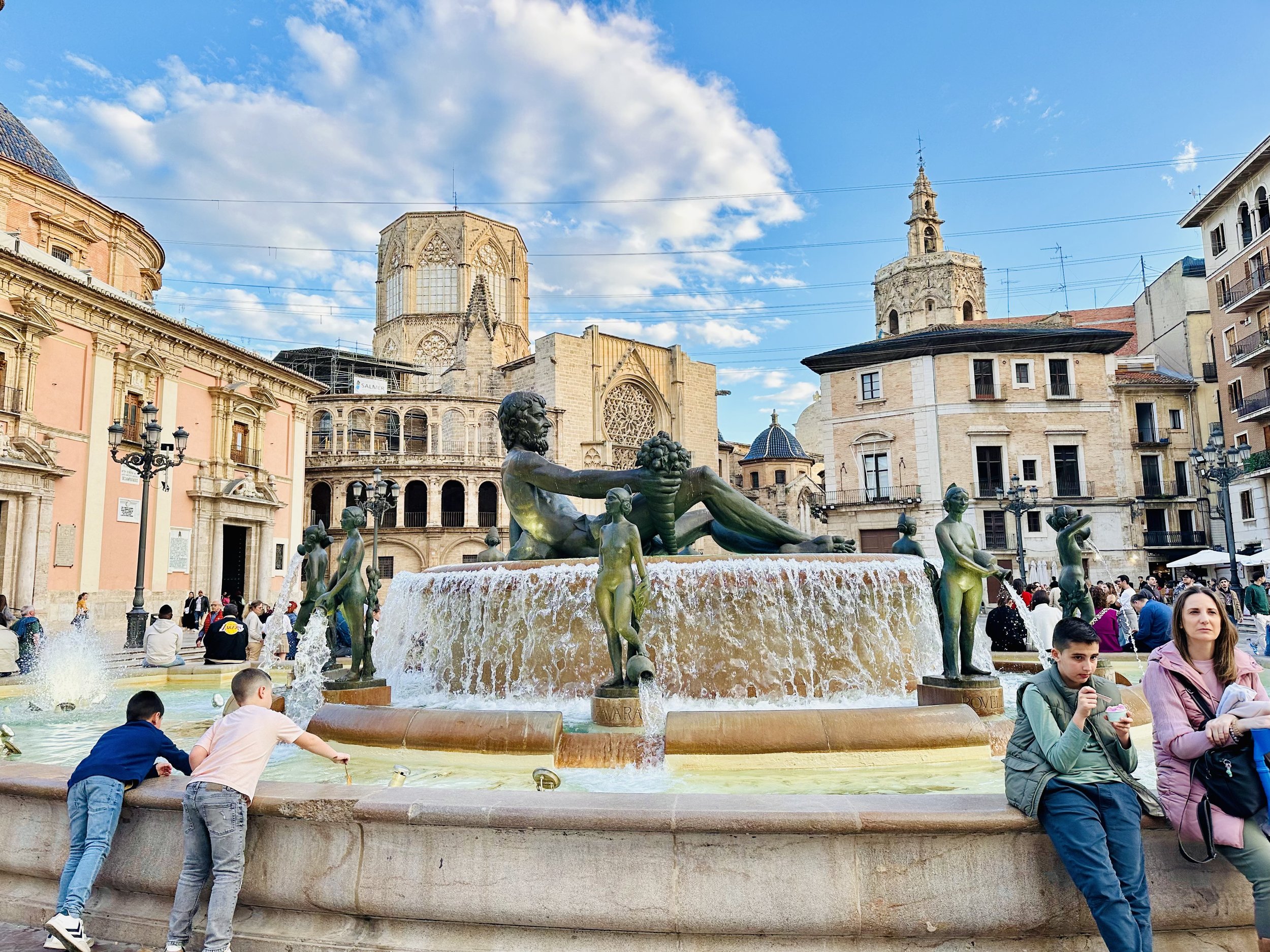
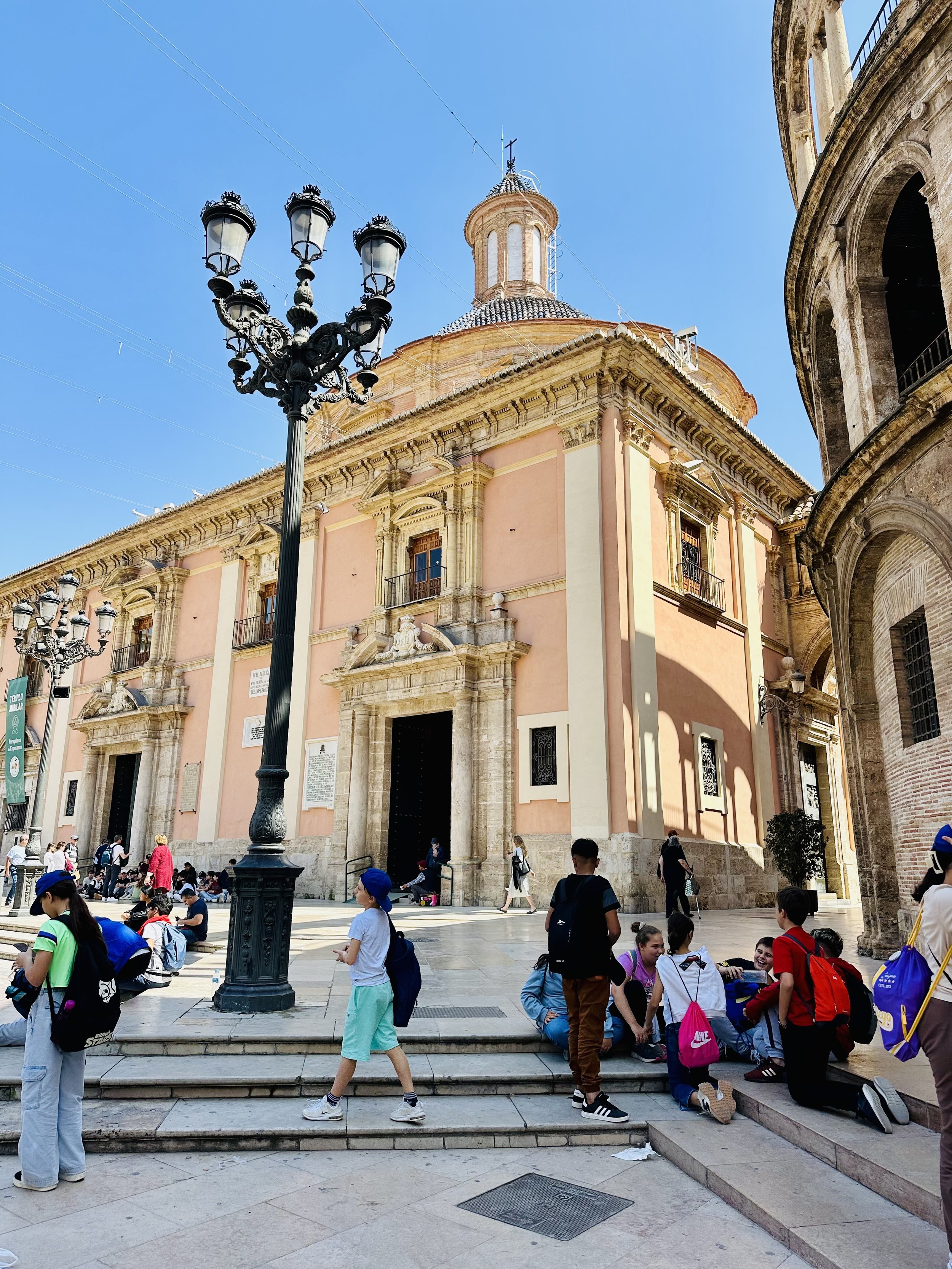
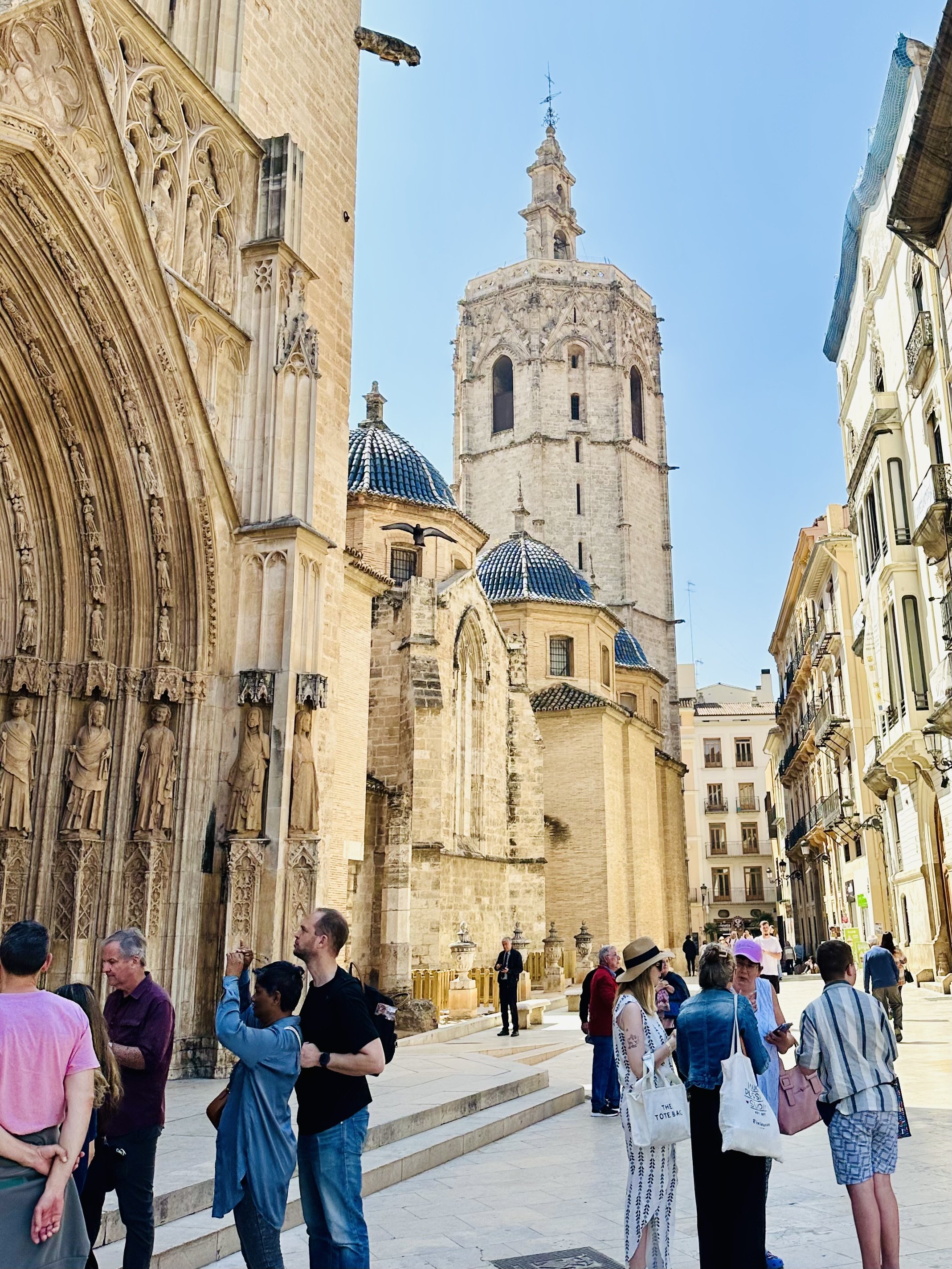
Las Fallas and the Water Tribunal are UNESCO Intangible Cultural Heritages. The Silk Exchange is a UNESCO World Heritage Site.
